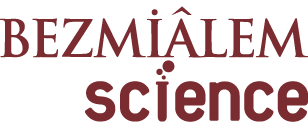ÖZET
Amaç:
Paragangliomalar, retroperitoneal bölgelerde otonom sinir sisteminin yakınında veya içinde ve çeşitli organların sempatik gangliyonlarında yaygın olarak dağılım gösteren ekstra-adrenal kromaffin dokusundan kaynaklanan nadir görülen tümörlerdir. Biz bu çalışmada 18 yıllık abdominal paraganglioma cerrahisine ait klinik deneyimimizi sunuyoruz.
Yöntemler:
2002-2020 yılları arasında kliniğimizde abdominal paragangliomaya bağlı cerrahi uygulanan 12 hastadan elde edilen veriler retrospektif olarak incelendi.
Bulgular:
Çalışmamızda 12 hasta vardı. Ortalama yaş 44 (21-81) idi. Hastalarda klasik klinik semptomlar olan baş ağrısı (n=2,% 16,6), çarpıntı, karın ağrısı (n=5, 41,6), terleme (n=2, %16,6) ve hipertansiyon (n=5, %41,6) mevcuttu. Olgulardan biri (1/12; %8,3) insidental olarak tespit edildi. Kitle yerleşimi 10 olguda (%83,3) retroperitoneal bölgede, 2 olguda (%16,6) ise pelvik bölgede idi. Kliniğimize paroksismal hipertansiyon atakları ile başvuran hastaların beşinde kan ve 24 saatlik idrar testlerinde vanil mandelik asit ve metanefrin düzeyleri yüksek bulundu. Ortalama 60 aylık takip süresi boyunca sadece 1 hastada (%8,3) metastaz gelişti ve bu hasta ilk ameliyatından 2 yıl sonra tekrar ameliyat edildi. Bir hastada (%8,3) ameliyat sonrası 36. ayda kardiyak problemler nedeniyle mortalite gelişti.
Sonuç:
Abdominal paragangliomalar nadir görülen tümörler olup optimal yönetiminde cerrahın hastalık seyri boyunca son derece dikkatli olmasını gerektirir. Bu süreç, fonksiyonel veya non-fonksiyonel lezyonların tanısından başlayarak komşu organ rezeksiyonu gerektirebilecek geniş cerrahi tedavilere ve de nüks açısından yaşam boyu takibe kadar uzanmaktadır.



